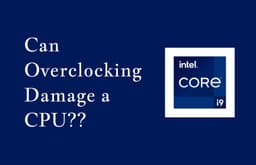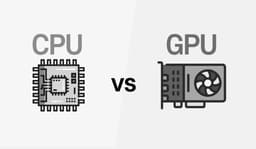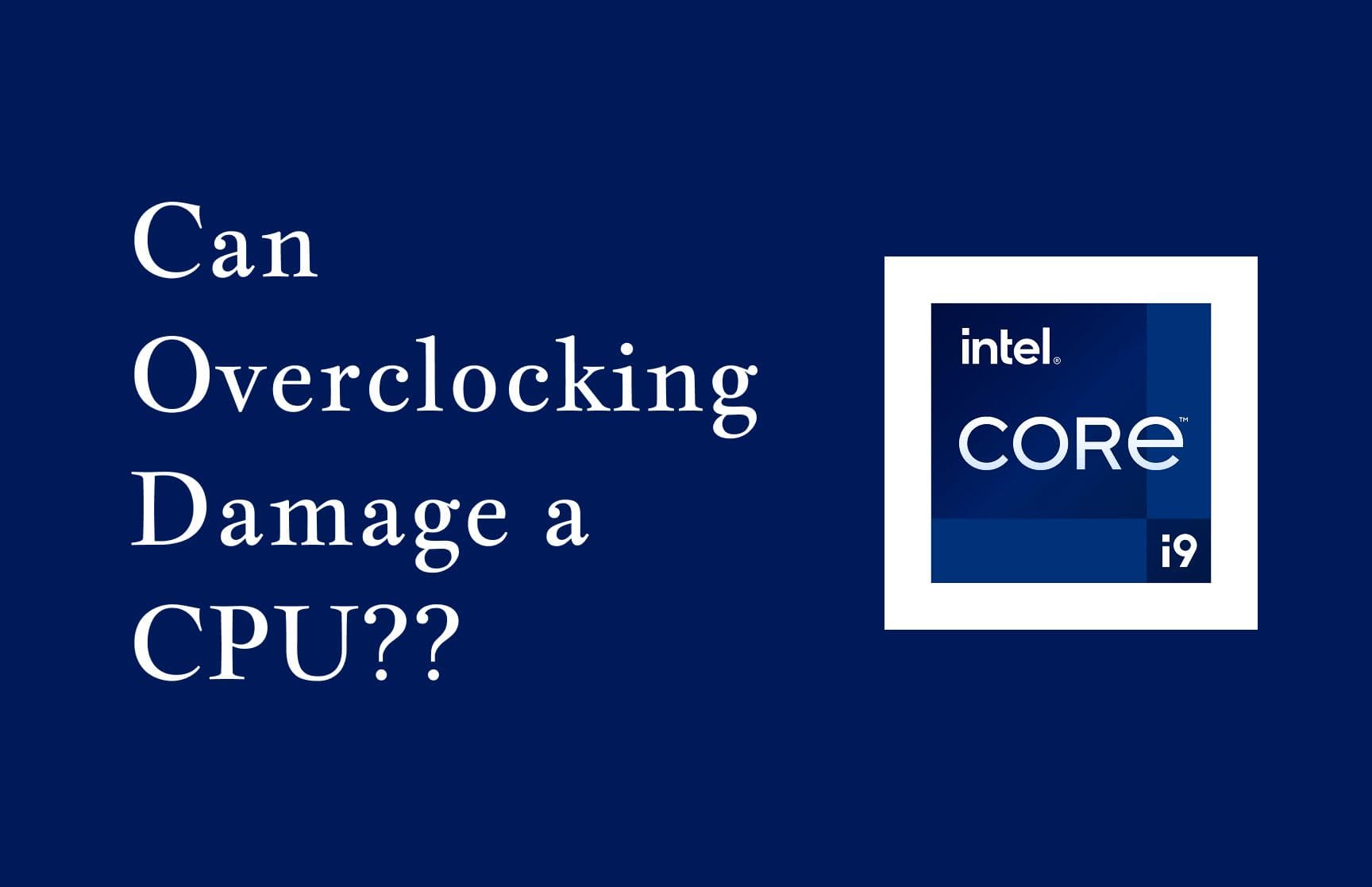Overclocking is a term used for increasing the default clock speed of a CPU. Every CPU comes with a default operating frequency. The default frequency is set by the manufacturer to create a balance between power consumption, performance, and thermals. Overclocking forces the CPU to perform more operations per second. This gives a boost to the performance.
The main reason behind people overclocking their CPU is to get a performance leap without upgrading the current hardware. Gamers are no new to overclocking, mostly to achieve higher frame rates. Content creators also do it sometimes to reduce the video or 3D applications' rendering time.
But one question stay raised. Can Overclocking Damage a CPU?
Before getting into this, let’s first understand how overclocking works.
How Overclocking Works?
A CPU operates at a certain clock speed, which is measured in gigahertz (GHz), and determines how many cycles it completes per second. For example, a 3.5 GHz processor performs 3.5 billion cycles per second. With a higher clock speed, a processor is generally considered to have faster processing and better performance in tasks that require only a single thread. Overclocking increases the clock beyond the default setting to make the CPU perform more program instructions per second.
When overclocked, the CPU requires more voltage than previously to maintain the stability of the frame. Voltage is the electrical pressure that helps the CPU’s transistors to switch their current state (0/1 or ON/OFF) at a faster pace. However, increasing the voltage also increases the power consumption. And when there is more power consumption, there is more heat generation. When the CPU gets blazing hot, it may throttle its performance to avoid damage and unexpected shutdowns. Hence, maintaining a balance between speed, voltage, and temperature is key to achieving a stable overclock.
Can Overclocking Kill Your CPU?
Extreme overclocking pushes the CPU beyond the safe limit by increasing the clock speed and the voltage. This generates excessive heat and electric stress on the processor. If the cooling system is not sufficient, the CPU can fail to boot the system or shut down unexpectedly. Prolonged use with the same high clock speed can cause irreparable and permanent damage to the processor.
Common Failure Points:
CPU Degradation
After overclocking, the CPU doesn’t fail immediately, but running at high voltage for extended sessions can gradually degrade it. This means the CPU will slowly lose its ability to maintain overclocked speed even at higher voltages. Over time, it may require more voltage to run even at the default speed.
VRAM and Motherboard Failure
Voltage regulation modules, or VRMs, on the motherboard are responsible for the regulation of clean and stable power to the CPU. Cheap motherboards often come with weak VRMs that overheat or fail when high power is supplied, in the case of overclocking. This can cause motherboard damage or, in major cases, inconsistent power delivery to the CPU, leading to frequent crashes or hardware failure.
Power Delivery Issue
A low-quality power supply unit might fail to provide enough power after the CPU is overclocked, resulting in voltage fluctuation or sudden shutdowns. In a severe case, this can damage the CPU as well as other components, such as RAM or storage.
There are documented cases on hardware forums where the CPU died due to overclocking. This usually happens when users apply excessive voltage, ignore temperature warnings, or attempt extreme overclocks without sufficient cooling.
CPU Overclocking Benefits
Improved gaming performance
For games that are heavily CPU-dependent or rely on single-threaded performance, overclocking can provide a leap in the number of frames per second and a rather smoother gameplay.
Faster Rendering and Multithreaded Tasks
Professionals who use software for 3D rendering, video editing, or compiling large projects can really benefit from overclocking. Applications that are dependent on multiple CPU cores may experience reduced rendering times and quicker task completion when the CPU runs at a higher speed.
Better Benchmark Scores
Many PC enthusiasts overclock their CPU to achieve high benchmark scores in tools like Cinebench, 3D Mark, and Geekbench. These scores are often used to show or compare CPU potentials in competitions and forums.
Extending the Lifespan of Older CPUs
Users with older CPUs who are tired of facing stutter and lag, and are longing for an upgrade, instead of upgrading, can try overclocking their older CPU. It extends usability by squeezing out extra performance before a user shifts towards a whole new full hardware upgrade.
CPU Overclocking Risks
Overheating and thermal Throttling
Overclocking increases the power consumption, and power consumption increases the amount of heat. Without proper cooling, the CPU may exceed the safe temperature limits, and when it happens, modern CPU reduce their speed more frequently to prevent damage. Prolonged overheating can also end up with hardware damage.
Reduced Lifespan
Running the CPU at a voltage more than stock, a rise in temperature may accelerate wear and tear on its internal components. Even the CPU doesn’t fail all at once, but continuous exposure to this condition can decrease the usable lifespan of the CPU. Over time, there can be stability issues.
Random Crashes
Overclocked systems are more prone to random crashes, BSODs, application errors, and system boot failure if the overclock isn’t compatible or stable. Even a small misconfiguration in voltage or frequency can make the entire system unreliable for important tasks.
Risk of Hardware Damage
Pushing the CPU beyond its capability without proper control over voltage and thermals can result in irreparable damage. The transistors can burn out, the VRMs on the motherboard can be damaged, or there can be a failure of the related components like RAM and storage controllers.
Overclocking Void Warranty
Most manufacturers, including Intel and AMD, don’t consider overclocking normal usage. This meant that damage caused by CPU overclocking isn’t covered under standard warranty terms. However, there are some manufacturers who offer optional warranty plans that cover overclocking.
Conclusion
Overclocking can provide visible performance gains to content creation or gaming, or other CPU-intensive tasks. It actually allows users to push their hardware beyond its stock speed and get more out of the transistors inside, but when paired with good cooling and stability testing.
The risks are real. System instability, overheating, reduced lifespan, and the possibility of the CPU warranty going void all are factors to consider. Modern CPUs do come with features like thermal throttling and automatic shutdowns, but these things can’t fully guarantee protection against overclocking practices.
Users who are willing to invest time in testing with sufficient cooling solutions, overclocking can be good and rewarding. But those who lack technical experience and rely on system instability, sticking to stock settings, might be a safer choice for them.


